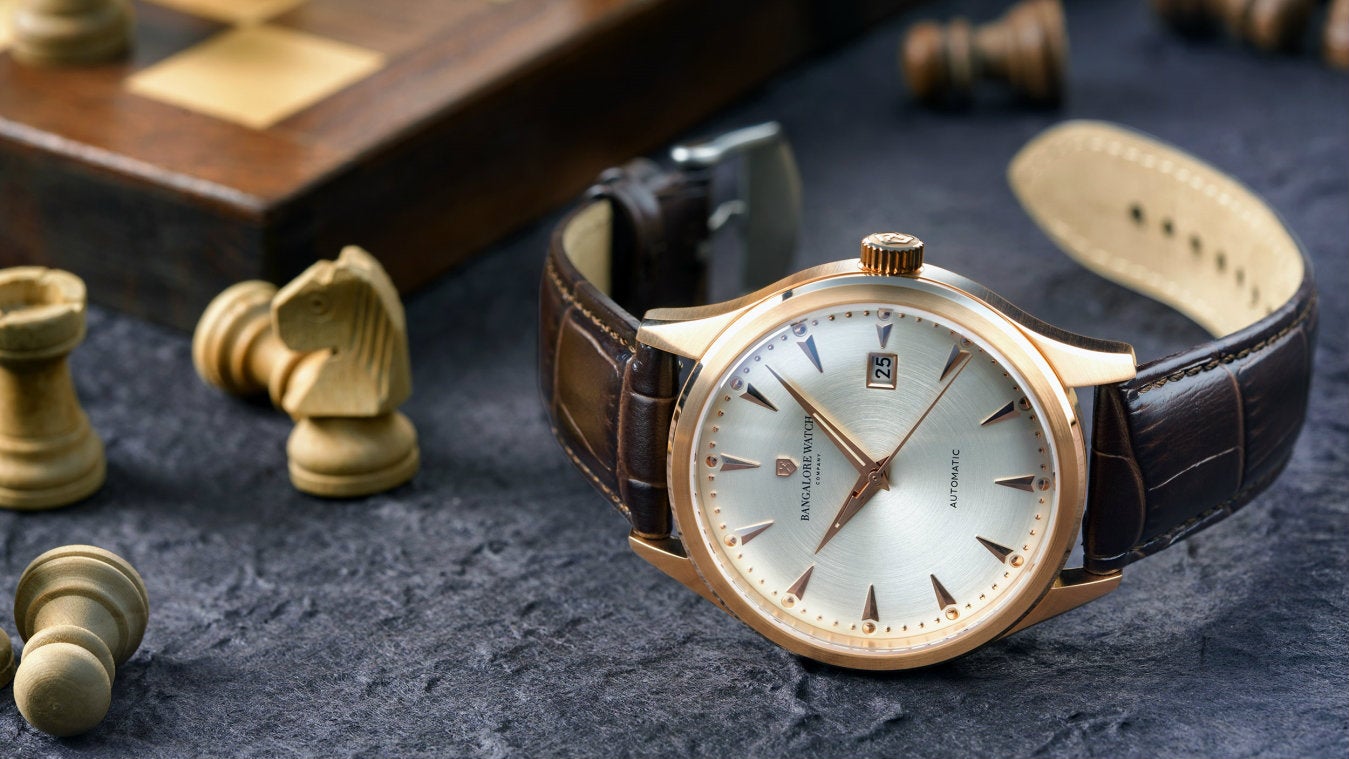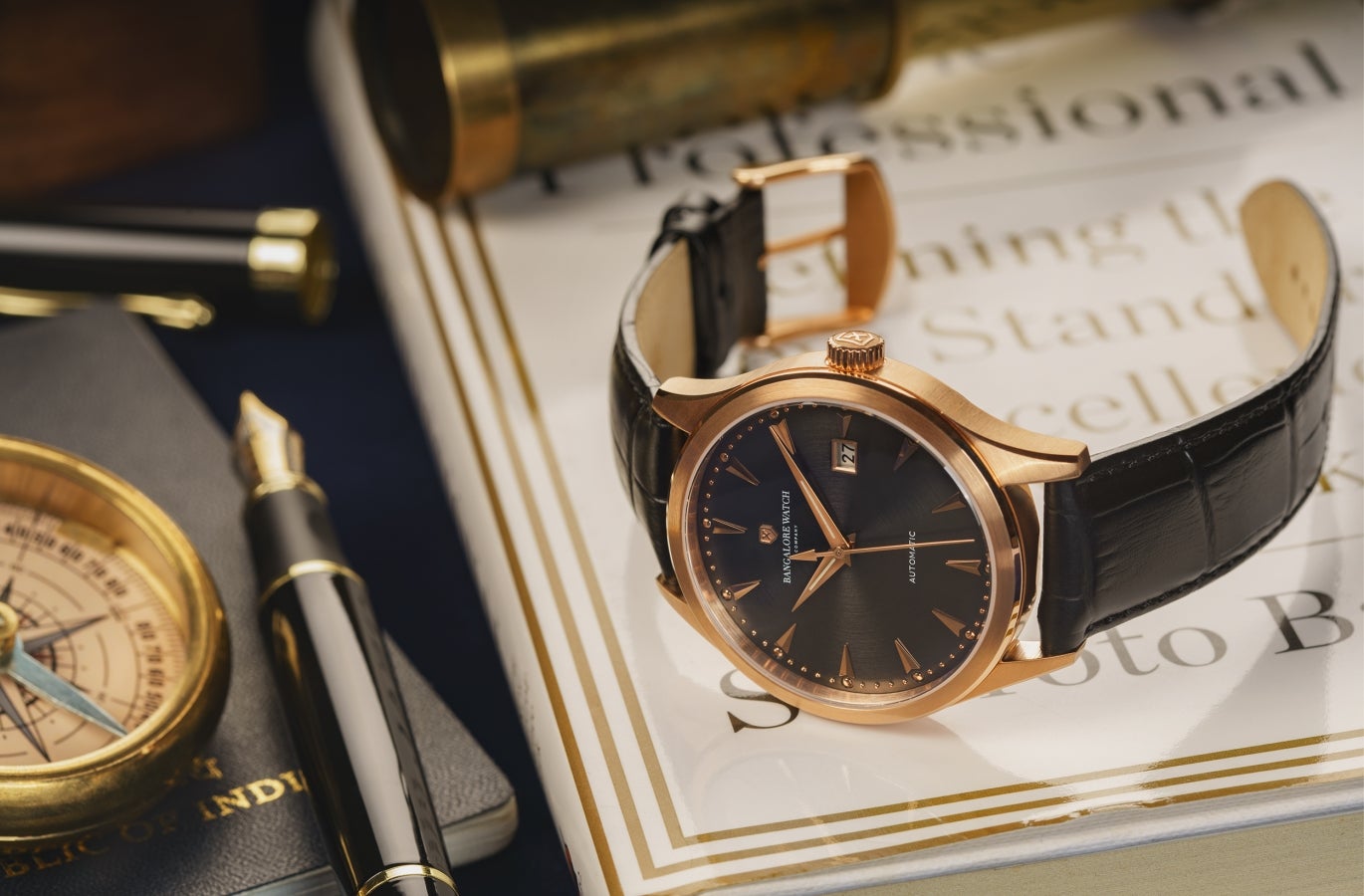In an era of smartwatches, one couple wants to revive Bengaluru’s history of watchmaking
Decades after the golden era of the state-run Hindustan Machine Tools (HMT), a husband-wife team of watch enthusiasts is setting out to revive the lost art of watchmaking in Bengaluru.


Decades after the golden era of the state-run Hindustan Machine Tools (HMT), a husband-wife team of watch enthusiasts is setting out to revive the lost art of watchmaking in Bengaluru.
Long before it became known as India’s Silicon Valley, the southern city was home to a thriving watchmaking business, dominated by the legendary HMT. The company’s classic and affordable mechanical watches were so in demand between the 1960s and 1980s that there was reportedly a waitlist to acquire one.
But the tide turned for HMT with changing times and styles. The switch in demand to quartz watches and competition from local and foreign brands meant that the company slowly lost business, and by the 2000s was making annual losses in the millions. In May 2016, the Indian government finally shut down the watch-making business.
The news profoundly affected Nirupesh Joshi and Mercy Amalraj, who were living in Hong Kong after years of working around the world in the tech industry. Originally from Chennai and Madurai in Tamil Nadu, respectively, the pair called Bengaluru home, and felt a nostalgic affection for Indian brands from the 1980s—especially HMT.
In their free time, the couple would visit Hong Kong’s watch boutiques, making friends with the sales staff and talking about timepieces.
“Every time we used to walk into these stores we used to wonder why fine watchmaking never took off in India as much as fine jewellry did,” Joshi, 36, told Quartz. “We heard of HMT shutting down… and we said someone should bring back fine watchmaking to India.”

This was in 2015, when the two were at the peak of their careers. But it would take another year before they decided to give up the nomadic life, move back to India, and get into watchmaking themselves.
In March 2018, after spending a year and a half on research and planning, and investing what they described as a “significant amount” of their life savings (they declined to share the actual figure), the pair launched the Bangalore Watch Company, which they say is one of India’s first watch “microbrands.”
Old is gold
For several years, the global watch industry went through a rough patch, with sales and profits taking a beating even as manufacturing and distribution costs remained incredibly high. But while established brands were struggling, a new generation of watch entrepreneurs in the US and Europe began creating “microbrands” that defied the norms of the industry: Created by watch lovers, not industry veterans, they produced high-quality watches in limited numbers, and sold directly to customers, bypassing the costs of distributing via retail stores.
It’s this model that Joshi and Amalraj decided to experiment with in India, where rising disposable incomes and awareness about timepieces as a fashion statement have boosted the watch industry over the years. In 2017, India’s watch market was estimated to be worth Rs8,940 crore ($1.3 billion), up 91% from 2012, according to data from Euromonitor International.
The market has for long been dominated by Titan, which sells affordable to mid-range watches that are widely available across the country. And Swiss luxury brands such as Longines, Rolex, and Rado are a favourite among those who can afford them.
But the middle of the market has been the stronghold of what Joshi describes as “fashion watches,” i.e. those mass-produced for designer brands such as Michael Kors and Tommy Hilfiger. In an aspirational, status-conscious market like India, many consumers are happy to flaunt branded watches, even if the labels didn’t technically make them.
The Bangalore Watch Company wants to disrupt this with its first collection of 500 meticulously crafted men’s dress watches that are priced at around Rs39,000 each.

The watches, made with sapphire crystal and surgical grade stainless steel, have a simple, classic look, and an exhibition case-back that reveals the sophisticated mechanism on the inside. They’re assembled in Bengaluru from components sourced from manufacturers around the world, including the Japanese firm Citizen. This was a deliberate choice, Joshi says, a way to connect to the history of watchmaking in Bengaluru, where many of HMT’s watches were made in collaboration with Citizen.
However, unlike HMT, whose tagline “Timekeepers to the Nation” marked the brand as accessible to all, the Bangalore Watch Company is understandably targeting a very specific customer.
“Our typical customer is upwardly mobile, well-travelled, well-read, very well aware of brands worldwide, and is slowly beginning to have a feeling of pride about starting to use Indian-origin products,” Joshi explained. This new shopper has sparked the rise of independent Indian brands in everything from clothing to coffee.
But in a country where minimalism is hardly the prevailing trend, the market for simple, vintage-inspired watches isn’t a big one.
“In India, even with this money glut, there is also a big fondness for chunky watches…They like something a little flashy, a little shiny,” Parth Charan, watch editor at GQ India magazine, told Quartz. He added that only those with a particular preference for classical watches would likely look to the Bangalore Watch Company.
A key point that works in the brand’s favour, though, is the price: Given their design, Charan says the watches are pretty reasonable. Similar options from brands such as TAG Heuer would cost over Rs1 lakh in India.
“An enthusiast on a budget would definitely be interested in something like this,” he said.
The era of smartphones and smartwatches presents another challenge.
But the Bangalore Watch Company says it has received pre-orders from customers not just in India’s big cities but also in Singapore, the US, and Australia, where nostalgic non-resident Indians are intrigued by the idea of wearing a classic, well-designed Indian watch.
After all, for many, old is still gold.
“If you have a smartwatch, in a year or two it gets replaced by something new,” Joshi said. “Mechanical watches never get replaced by something new.”